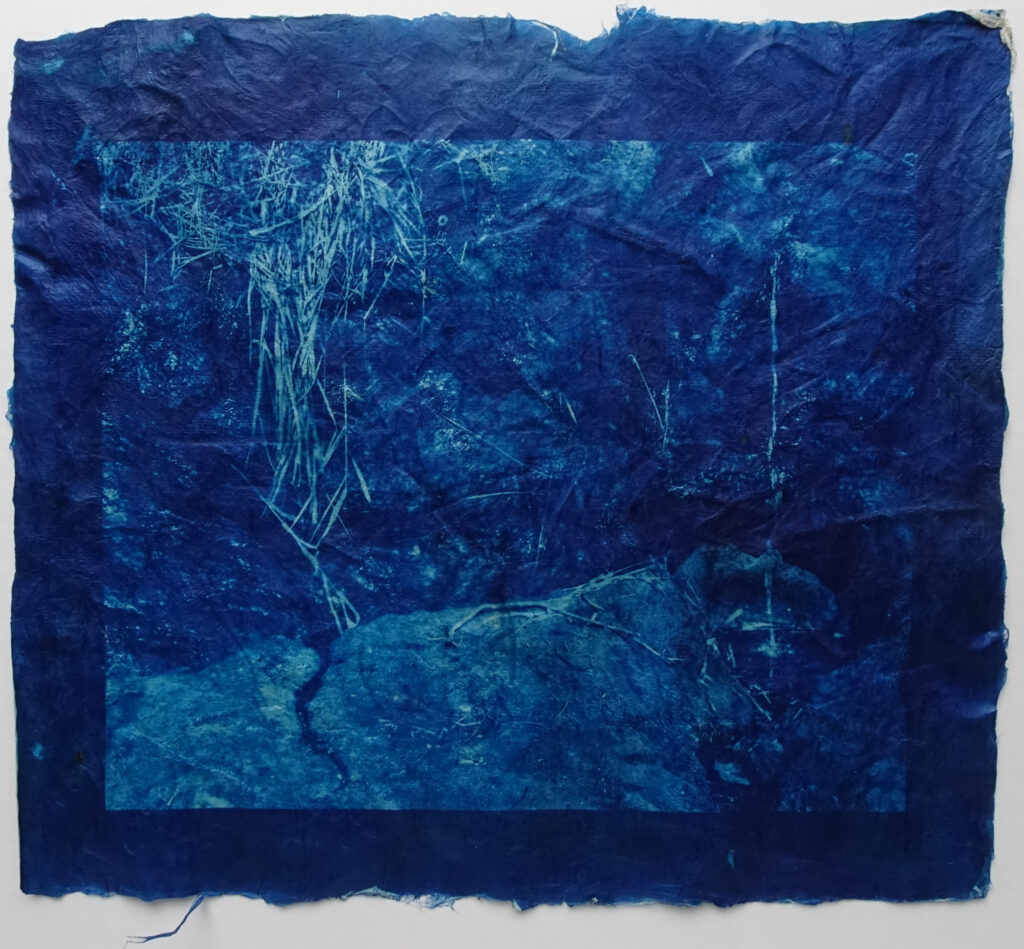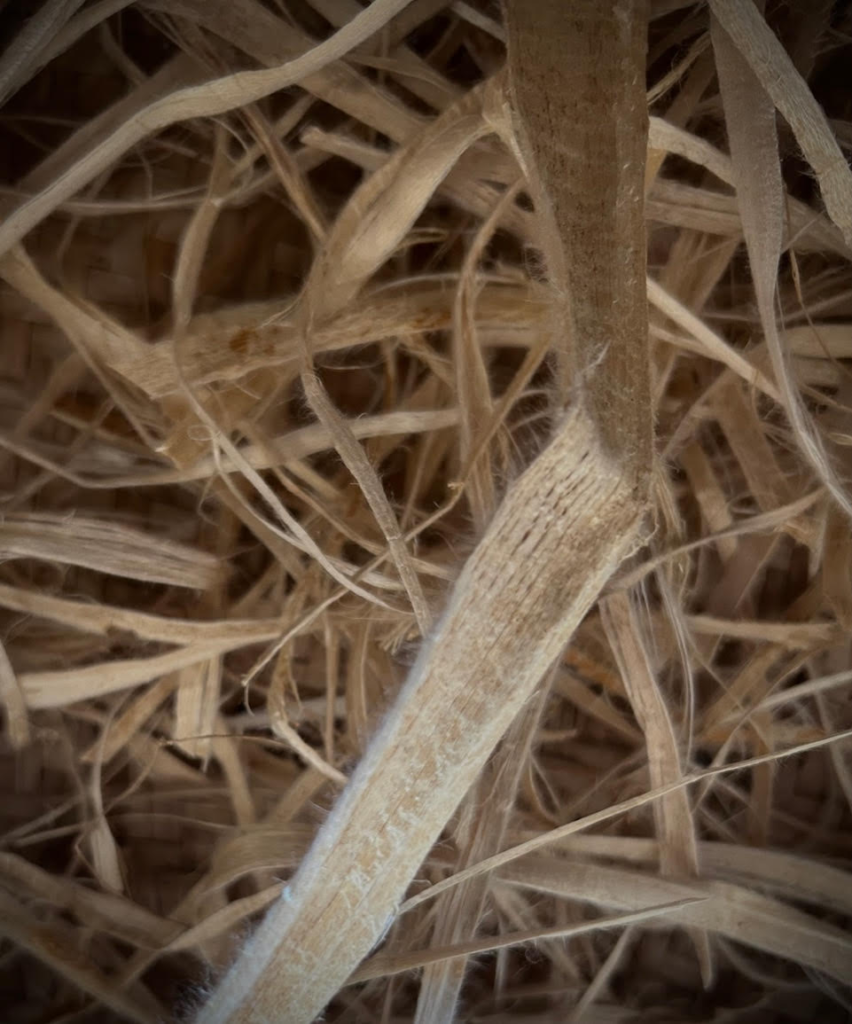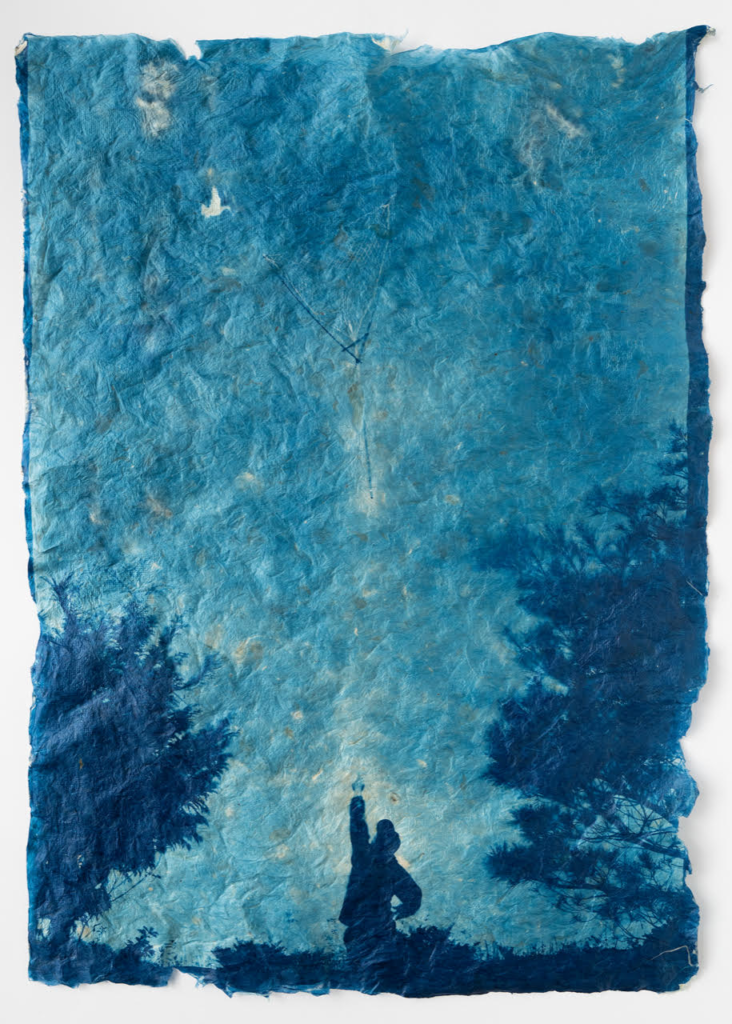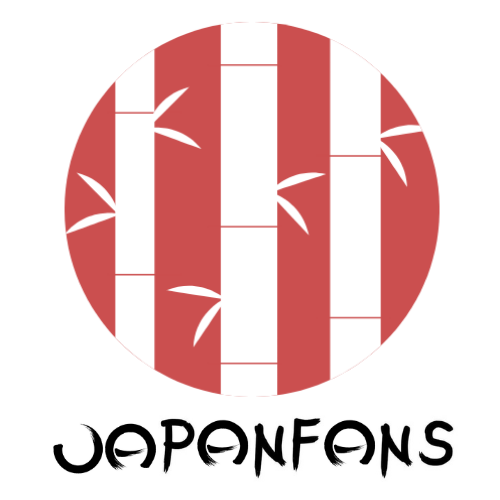An interview with Mika Horie, an artist passionate about Japanese paper and cyanotype printing. She tells about her journey, traditional gampi papermaking, and captivating blend of Western photography with Japanese handcraft.

Can you tell us more about your artistic journey and how you became interested in working with Japanese paper and cyanotype printing?
As a university student, I developed a deep appreciation for Japanese paper while studying photography and design. It all started in a photo bookmaking class where I sought the perfect print material. A chance encounter with a Japanese paper store in Kyoto opened my eyes to the intricate patterns and vibrant colours that could be achieved when printing on Japanese paper using an inkjet printer. This experience ignited my interest in washi and its production. I was fortunate enough to visit a gampi paper workshop where I began to learn the art of Japanese paper making. There, I fell in love with gampi paper, which has been growing wild in Japan for centuries. Using this ancient technique, I have produced my paper in my studio for the past decade.
During my first year of making washi paper in my countryside studio, I faced the challenge of doing photographic work without expensive equipment. However, my problem was solved when I attended a cyanotype exhibition and workshop in a nearby village. Using materials readily available to me, I was able to print my images on my Japanese papers just a few days later. I was pleasantly surprised with the results – the blue tones created a delicate and dynamic gradation that was truly remarkable!
What inspired you to focus on traditional gampi paper and its unique qualities?
gampi, a type of tree, possesses a lustrous texture, strength, and captivating natural hue. It naturally thrives in mountainous areas and is renowned for its eco-friendly harvesting practices that originated from ancient forest-dwelling communities.
How did you learn the techniques of making gampi paper by hand?
Although I received a few months of training from two teachers at a specialised gampi workshop in Shiga Prefecture, I am primarily self-taught. I took the time to conduct my own research since the quality of gampi is highly dependent on the local climate. Through trial and error, I visited a nearby village named Echizen where paper is made from kozo (paper mulberry), and I spent around six months there. I am still actively researching and creating gampi.

Could you explain the process of creating gampi paper from start to finish?
Every year in April, I harvest the required amount of gampi to produce paper with local mountain experts. The skins are peeled and dried for at least a month. Only the white portion of the skin is peeled in the second step. A specific quantity of the white skins is boiled in a large pot with wood ashes for about four hours to eliminate the lye. This process makes the fibres neutral, resulting in long-lasting paper. The goose skin is then placed in a colander and soaked in river water overnight to ensure that the lye is eliminated. The next day, the gampi fibres are beaten with a mallet on a large flat stone until they are finely ground. Once the fibres reach a length of approximately 1-3 centimetres, they are ready for paper production. Water is drawn from the river and collected in a small tub-like container, and the fine fibres are thoroughly mixed in it. Finally, each sheet of paper is made using a one-of-a-kind Japanese screen called a “sukiwaku”. The paper is then drained and firmly attached to a board, dried in the sun until it is ready to be used.
How long does it typically take to make a single sheet of paper?
To embark on a mountain journey, it generally takes around two months. Once the gampi has been harvested and is being processed in the workshop, the entire procedure takes anywhere from four to seven days.

How do you select the images and subjects for your cyanotype prints?
Japan has a unique tradition of admiring nature throughout all four seasons. I select Images based on their ability to capture this essence. Recently, I have been delving into Japanese silk and handcraft, which are at risk of being forgotten and disappearing.
What draws you to the landscapes and natural elements around your home?
I find inspiration in the moments when nature undergoes incredible transformations. For example, it’s fascinating to observe flowers blooming every other day and fruits ripening every other year, even without keeping track of time.
What challenges do you face as one of the few modern practitioners of traditional gampi papermaking?
Having pursued this creation for a decade, I am now driven by my passion for Gampi and a desire to pass it on to future generations. In today’s world, where paper has become less prevalent in daily life, it can be challenging to make a living oneself solely through a particular skill. That’s why I aim to teach the art of gampi making to those with innovative ideas for its use in fields such as photography, art, and other applications with global value. I welcome individuals of all ages and nationalities to be a practitioner at my atelier.
How do you see the future of this craft?
The value of gampi paper and other Japanese papers extends beyond Japan’s borders, as they are highly respected. It is predicted that the exportation of these papers will continue to grow.
How do you balance preserving the history and techniques of Japanese handcraft with incorporating Western photography into your work?
Both are analogue processes and I rarely use machines to avoid losing the natural textures and imperfections. Additionally, I do not tone the cyanotypes as it is crucial to balance the blue created by sunlight and the texture of gampi paper.
Can you share any tips or advice for artists and enthusiasts interested in working with blueprints and exploring traditional papermaking techniques?
It’s important to thoroughly examine your materials, avoid solely relying on textbook instructions, and continually experiment while asking your own questions. Connecting with artists in your field and practising consistently will help you improve your conceptual thinking skills for both fields.
Thank you very much, Mika Horie, for this inspiring interview!

You can read an essay about the work of Mika Horie, written by Annemarie Zethof (in Dutch),on the website of the Haiku Ontmoetingsdag.
Visit Mika’s Facebook & Instagram to see more of her beautiful work!
